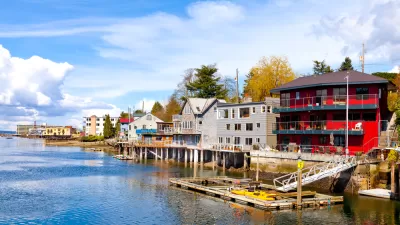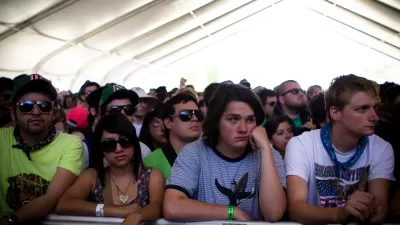Black homeownership rates have been slow to recover from the great recession and the gap between whites and blacks in home ownership is bigger today than it was in the 1980s.

"Forty-three percent of blacks owned homes in 2017, according to an annual report from the Joint Center for Housing Studies of Harvard University," Jonnelle Marte writes for the Washington Post. That's a lot lower than the 72 percent home ownership rate for whites.
"The gap persists even as African Americans have experienced other major financial gains since the downturn," Marte writes. Black unemployment is down to 5.9% nationwide, but, while many have been able to find work after the 2008 downturn, the effects of that period still linger for a population that was more likely to have been foreclosed on or to have lost their employment.
In 1968 after the passage of the Fair Housing Act, the percentage of African American families who owned a house rose, closing some of the gap between black and white home ownership, but those gains have been wiped out. The current gap is bigger today than it was 30 years ago.
FULL STORY: ‘We haven’t made any progress’: Black homeownership is stuck near 30-year lows

Alabama: Trump Terminates Settlements for Black Communities Harmed By Raw Sewage
Trump deemed the landmark civil rights agreement “illegal DEI and environmental justice policy.”

Study: Maui’s Plan to Convert Vacation Rentals to Long-Term Housing Could Cause Nearly $1 Billion Economic Loss
The plan would reduce visitor accommodation by 25% resulting in 1,900 jobs lost.

Why Should We Subsidize Public Transportation?
Many public transit agencies face financial stress due to rising costs, declining fare revenue, and declining subsidies. Transit advocates must provide a strong business case for increasing public transit funding.

Paris Bike Boom Leads to Steep Drop in Air Pollution
The French city’s air quality has improved dramatically in the past 20 years, coinciding with a growth in cycling.

Why Housing Costs More to Build in California Than in Texas
Hard costs like labor and materials combined with ‘soft’ costs such as permitting make building in the San Francisco Bay Area almost three times as costly as in Texas cities.

San Diego County Sees a Rise in Urban Coyotes
San Diego County experiences a rise in urban coyotes, as sightings become prevalent throughout its urban neighbourhoods and surrounding areas.
Urban Design for Planners 1: Software Tools
This six-course series explores essential urban design concepts using open source software and equips planners with the tools they need to participate fully in the urban design process.
Planning for Universal Design
Learn the tools for implementing Universal Design in planning regulations.
Smith Gee Studio
Alamo Area Metropolitan Planning Organization
City of Santa Clarita
Institute for Housing and Urban Development Studies (IHS)
City of Grandview
Harvard GSD Executive Education
Toledo-Lucas County Plan Commissions
Salt Lake City
NYU Wagner Graduate School of Public Service





























